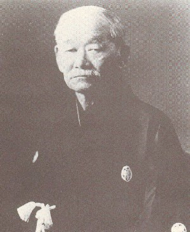
October 28th, 1860 saw the birth of Jigoro Kano in Kobe, Japan. Son of a high-ranking government official and Shinto Priest, he was the third son of a family of three boys and two girls. Young Jigoro was physically weak in his early years, in fact, he was beaten up so often by local bullies he resolved to strengthen himself the best way he could. It was his unrelenting drive to learn how to defend himself that eventually led to his formulation of Judo.
Jujitsu was flourishing during Jigoro’s boyhood and it was to instructors of this martial art that Jigoro turned when he enrolled as a student at Tokyo Imperial University. Apparently he was obsessed with the desire to learn the manly art of self defense and concluded that jujitsu offered him his best chance. He was but 17 and his instructor felt him too young for serious training, however after several months of formal exercises Jigoro found another instructor who was an osteopath as well as an instructor in jujitsu. This may have been a fortunate combination of skills although historians apparently do not elaborate on the fact.
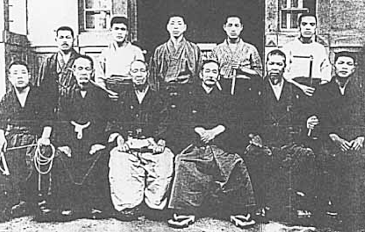 Jigoro Kano ate, drank and slept jujitsu. By the time he was 21 he became a master. It was about this time that he encountered a 200 pound bruiser to whom he invariably lost. He wanted to beat this man so badly that it filled all his thoughts and after studying everything he could get his hands on he finally worked out a new technique. Jigoro Kano ate, drank and slept jujitsu. By the time he was 21 he became a master. It was about this time that he encountered a 200 pound bruiser to whom he invariably lost. He wanted to beat this man so badly that it filled all his thoughts and after studying everything he could get his hands on he finally worked out a new technique.
The next time he met his burly rival he charged in low, lifted him onto his shoulder whirled him around and tossed him to the mat. He named his new throw ‘kata guruma’ or shoulder whirl. Other throws he worked out included ‘uki-qoshi’ (rising hip throw) and ‘tsuri-komi-goshi’ (lift-pull-hip throw).
Kano now devoted himself to, formulating a system of reformed jujitsu founded on scientific principles, integrating combat training with mental and physical education. He borrowed mat techniques, striking techniques and throwing techniques from various schools of jujitsu, holding on to those that conformed to scientific principles and rejecting all others. All harmful and dangerous techniques were eliminated.
When 22 year old Kano took nine of his private students from the dojo of master Iikubo
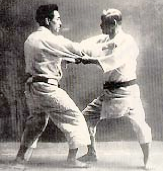 in February 1882, and set up his own dojo. Judo didn’t automatically spring into being, In fact master Iikubo came two or three times a week to help instruct Kano’s students. They were still learning jujitsu rather than judo. Possibly judo came into being the day that Kano first defeated Iikubo. Until then he had never managed to get the better of him, But that day in randori practice, Kano blocked every move Iikubo made, then called on his ‘uke-waza’and ‘sumi-otoshi’ to throw the jujitsu master no less than three times. in February 1882, and set up his own dojo. Judo didn’t automatically spring into being, In fact master Iikubo came two or three times a week to help instruct Kano’s students. They were still learning jujitsu rather than judo. Possibly judo came into being the day that Kano first defeated Iikubo. Until then he had never managed to get the better of him, But that day in randori practice, Kano blocked every move Iikubo made, then called on his ‘uke-waza’and ‘sumi-otoshi’ to throw the jujitsu master no less than three times.
Kano explained: ‘Force your opponent to make his body rigid and lose his balance, and then when he is helpless, you attack.’
Kano declared: ‘Taking together all the merits I have acquired from the various schools of jujitsu, and adding my own 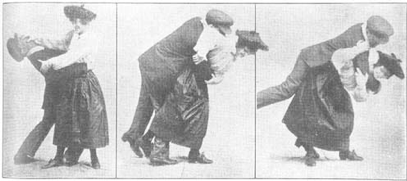 devices and invention, I have founded a new system for physical culture, mental training and winning of contests. This I call Kodokan-Judo.’ devices and invention, I have founded a new system for physical culture, mental training and winning of contests. This I call Kodokan-Judo.’
Kano saw judo in terms of a sport, whereas jujitsu was merely another of the marital arts, a method of defense. The dangerous techniques of jujitsu were eliminated from the judo contests, but retained as part of judos defense system. Another essential difference from jujitsu was judos application of ‘kazushi’, a theory devised by Jigoro Kano during his jujitsu training and used so successfully against master Iikubo.
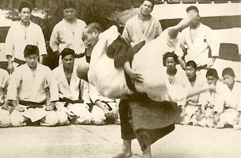 ‘Using a minimum amount of strength, it is possible to throw your opponent if you force him off-balance by breaking his posture.’ ‘Using a minimum amount of strength, it is possible to throw your opponent if you force him off-balance by breaking his posture.’
Kano’s fame and greatness are based on this principle just as much as they are on his being the founder of judo. |